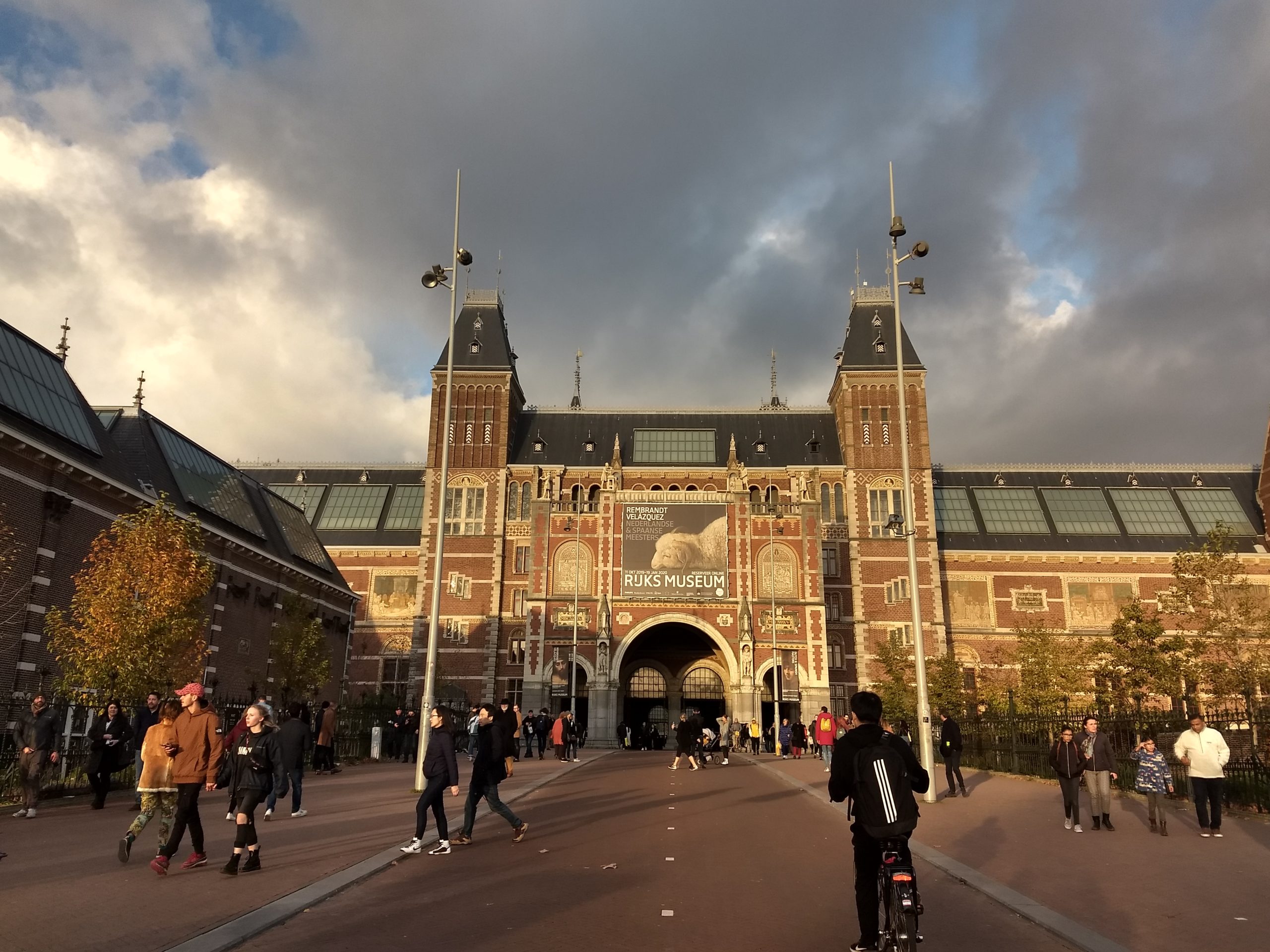The Rijksmuseum is a jewel in Amsterdam’s glorious crown. While the tickets are 20 euros each, every one of those euros are worth it. This collection of masterpieces is among the greatest in the world and I count myself very fortunate in being able to have seen it. This post shall contain my three highlights from the museum and one or two from the temporary exhibition, depending on how I feel by the end of this post.
My first highlight is the magnificent Fishing for Souls, by Adriaen Pietersz. This 1614 piece is not only technically brilliant but it also tells a tale of the political geography of the time. One can see Protestants on the left and Catholics on the right, both trying to strengthen their number by gathering lost souls. Observe the vivacity of the colours here, the contrast is quite striking. Also impressive is the amount of space between the two rivalling factions and what fills this space. Finally, the seemingly metallic rainbow which unites and frames the painting is quite wonderful. A bright future ahead indeed.
At the left are Protestant ministers and leaders of the Republic (including Maurice), and at the right the archdukes who govern the South, with countless Catholic clergymen. The North, according to the painter, has a promising future: the sun shines there, the trees are full of leaves. Whosoever wants to be saved is better off swimming to a Protestant boat. Rijksmuseum
Secondly, I should like to talk about A Windmill on a Polder Waterway, Known as ‘In the Month of July’ A Windmill on a Polder Waterway, by Paul Joseph Constantin Gabriël. This piece, thought to have been painted around 1889, is in my view a masterpiece. This is the piece I stood for the longest time admiring, not least because of its enormous size. I bought a print of this piece from the gift shop and it hangs proudly above my bedside table.
Everything about this piece is masterly, but I think what chiefly caught my critical eye was the excellent rendering of the reflection. The way one discovers even more about the scene through it is quite fantastic. The brush strokes are deliberately visible, which I like provided the subject matter at the end is well presented. Further, the variety and brightness of the colours used were unusual for Dutch painters of this era. Overall a superb work.
‘Our country is saturated with colour. … I repeat, our country is not grey, not even in grey weather, nor are the dunes grey’, wrote Constant Gabriël in a letter. Unlike many Hague School painters, he actually enjoyed depicting a beautiful summer day. There are even two of them in this painting: the image of the grass, sky and mill, and their reflection in the water. Rijksmuseum
The final highlight for me was a sculpture, Samson Slaying Two Philistines, by Paul Heermann created circa 1700. This level of intricacy reminds me of my favourite sculpture in Naples, Disillusion Francesco Queirolo, 1753-54. A wonderful article on the sculptures in the Capella Sansevero here.
But back to the sculpture at hand, the first point to note is the scale. This piece was 15cm in height. So intricate! The detail in the musculature is extraordinary. The ribs protruding from exertion; the precision in the depiction of the knee bone; the shoulder blade. Every element of this piece was meticulously thought out and is deeply impressive.
This is a copy of a famous lost statue that Michelangelo made around 1527, just before Heemskerck arrived in Rome. The Italian genius was an endless source of inspiration and perhaps also of competition for the ambitious Heemskerck. He incorporated elements of Michelangelo’s sculpture into two of his Strong Men, namely Hercules Slaying the Centaur Nessus in this gallery and Samson Slaying the Philistines (Allen Memorial Art Museum, Oberlin, USA). Rijksmuseum
My final highlight comes from the temporary exhibition at the Rijksmuseum. The Threatened Swan, Jan Asselijn, created circa 1650 struck me. This is due in part to my knowing the painting beforehand, having read about it on the app Daily Art, which sends me daily pieces of art and detailed explanations of each piece.
What most shocked me about this painting I wonder? Perhaps the dew falling from the webbing of the right foot, indicating movement. I think the depiction of the defensive pose is superlative. I also like the dog in the corner making its advance. The swan’s beak also is particularly spectacular.
A swan fiercely defends its nest against a dog. In later centuries this scuffle was interpreted as a political allegory: the white swan was thought to symbolize the Dutch statesman Johan de Witt (assassinated in 1672) protecting the country from its enemies. This was the meaning attached to the painting when it became the very first acquisition to enter the Nationale Kunstgalerij (the forerunner of the Rijksmuseum) in 1880. Rijksmuseum
Overall, The Rijksmuseum provided me with renewed adoration of art as a form and Dutch artists in general. The building itself is magnificent as well, which is an added bonus. I recommend it most heartily.
PS: In case you didn’t know today is my birthday and to stifle the inevitable arrow of time and stop me ageing, I shall need as many compliments as possible. “Oh how very young you still look for your age” etc. Thank you!





